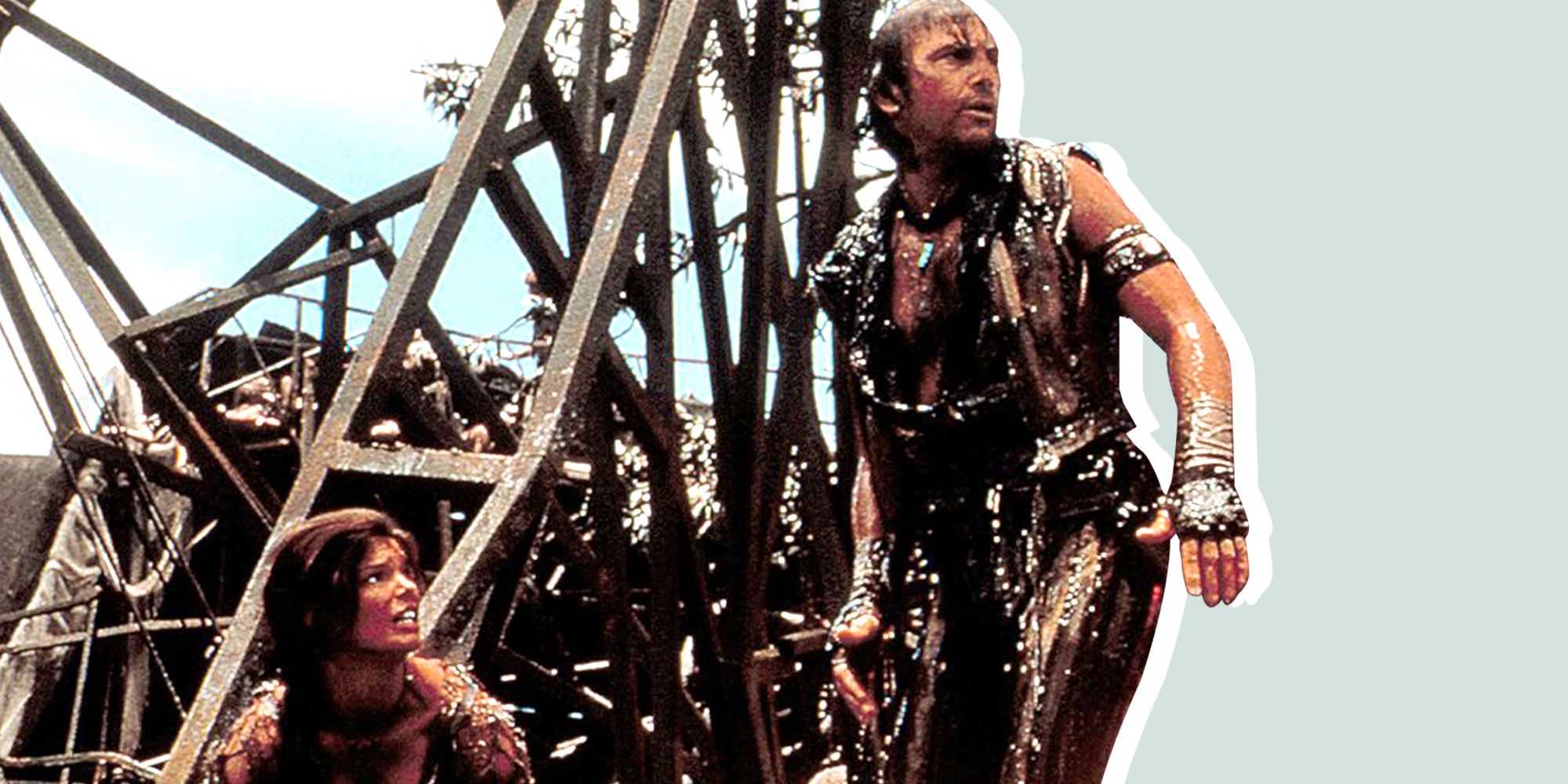

The enormous practical atoll set, in particular, is a remarkable feat of production design-a precarious fortress of wood, rope, and scrap metal, as frangible as it is imposing.

It’s in these moments that Waterworld is at its very best-when it’s establishing the scuzzy materials and machinery of its world. Later in the film, the Mariner witnesses a desperate atoll community dumping a corpse into a pool of putrescence to be composted-a large-scale implementation of his own thrifty use of bodily fluids in a self-contained cycle of resources. It’s an amusingly unpleasant opening to a blockbuster spectacle, and it’s surprisingly effective in establishing the sort of sordid world-building from which the film sculpts its distinctively dismal environment. When we see him for the first time, he’s pissing into a bottle, pumping the urine through some sort of crude filtration apparatus, drinking half of it, and spitting the rest of it out into a potted lime tree. Minuscule fragments of civilisation barely survive on floating structures known as “atolls,” frequently plagued by gas-guzzling marauders known as “Smokers.” There are still people who cling to the myth of “Dryland,” an end to the endless ocean-but it’s a fading hope.Ī lonely trimaran sails into view, and onboard is the Mariner ( Costner), a weary wanderer without a companion or a name. Waterworld-buildingĪs the film begins, the continents on the Universal Pictures globe disappear beneath the waves, introducing us to a post-apocalypse in which the polar ice caps have melted, covering the entire planet in water. Neither a misjudged miracle of mad genius nor an unmitigated catastrophe, it’s a work of reckless ambition and sprawling mediocrity-visually remarkable and emotionally bankrupt. The answer, I think, is that watching the film today is to rediscover a sturdy but rather middling treasure, as astonishing as it is underwhelming. So, putting all of that famously turbulent history to one side, how does Waterworld actually hold up today? Has it finally revealed itself as a wrongfully maligned masterpiece, just waiting to be reconsidered and reclaimed like Cimino and May’s visions? Is it a goofy glory that belongs in the so-bad-it’s-good pantheon? Or is it just plain terrible?

#Waterworld movie beginning tv#
And once home video sales and TV deals were taken into account, Waterworld ultimately emerged afloat in profit-far from a heavyweight hit, but fruitful nonetheless. Certainly, the film punched below its weight at the North American box office, but its overseas haul compensated for its domestic shortcomings. Still, despite everything, the persistent legend that Waterworld is one of film history’s monumental financial failures isn’t quite true. The initial budget of $100 million consequently bloated to a staggering $175 million. And Kevin Reynolds, the film’s credited director, found himself undermined by Costner’s contributions at every turn, eventually capitulating-leaving Costner to complete the project himself. Joss Whedon was brought in to make final revisions to the script, but he was effectively just a conduit through which Costner could impose his own authorial voice-over Peter Rader and David Twohy’s writing. Composer Mark Isham was ousted from the project after his initial score was rejected by Costner, and a new score was written by James Newton Howard instead. Tales of the film’s painfully protracted production, of the carousel of unceremonious arrivals and departures, and of Costner’s despotism as a producer and lead actor, are well known-largely eclipsing the film itself. Twenty-five years on, it’s now been reduced to nothing more than cultural debris-mentioned only as a curious piece of pub quiz trivia, or alongside Michael Cimino’s Heaven’s Gate and Elaine May’s Ishtar as notorious flops. Does anybody still remember Waterworld? Once the most expensive film ever made, Kevin Costner’s aquatic epic only seems to recede further and further as the years go by, its presence eroded by the tides of time.


 0 kommentar(er)
0 kommentar(er)
